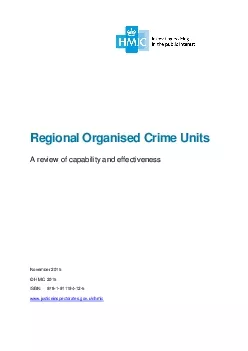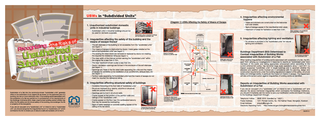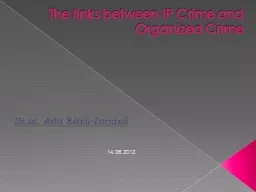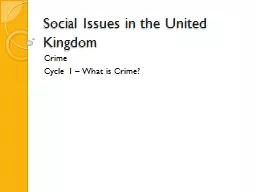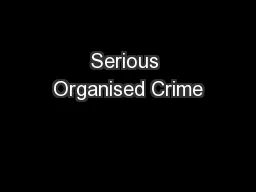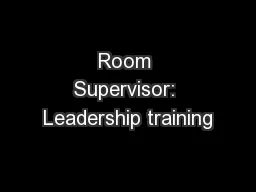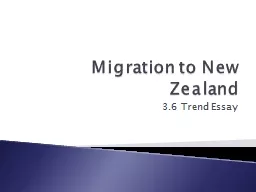PDF-Regional Organised Crime Units
Author : jovita | Published Date : 2021-09-15
A review of capability and effectivenessNovember 2015 HMIC 2015ISBN9781911194125wwwjusticeinspectoratesgovukhmic2Contents1Summary42About this inspection9Methodology10Regional
Presentation Embed Code
Download Presentation
Download Presentation The PPT/PDF document "Regional Organised Crime Units" is the property of its rightful owner. Permission is granted to download and print the materials on this website for personal, non-commercial use only, and to display it on your personal computer provided you do not modify the materials and that you retain all copyright notices contained in the materials. By downloading content from our website, you accept the terms of this agreement.
Regional Organised Crime Units: Transcript
Download Rules Of Document
"Regional Organised Crime Units"The content belongs to its owner. You may download and print it for personal use, without modification, and keep all copyright notices. By downloading, you agree to these terms.
Related Documents

